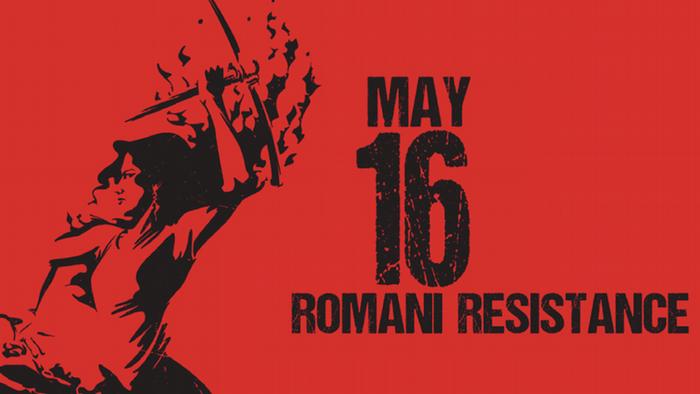On May 16, 1944, thousands of Sinti and Roma imprisoned in the Auschwitz concentration camp resisted their planned assassination by the SS.

16. May: Sinti and Roma Resistance Day
On May 16, 1944, several thousand Roma and Sinti barricaded themselves in the barracks of section B II of the “Z camp” in Auschwitz-Birkenau and resisted their planned extermination. They had received the information that the National Socialists planned to dissolve the so-called “gypsy camp” and liquidate its inmates. Due to the strong resistance of the Sinti and Roma, who had armed themselves with tools, the SS had to call off the planned extermination action.
The Roma Resistance Day is intended to commemorate this uprising, because the Sinti and Roma are becoming mostly reduced to their role as victims of National Socialist persecution. The history of the community's anti-fascist resistance, on the other hand, is hardly known.
On this occasion, DW published the portrait of the Hungarian Romni Angela Kocze. She is committed to ensuring that the history of the Sinti and Roma is included in the university curricula – including those about the heroes and role models of the community: together with the Hungarian publisher Magvetö, the biographies of the two Hungarian civil rights are now being published -Icons Agnes Daroczi and Jenö Zsigo published.
Also published by DW and worth reading are the eyewitness reports by the survivors Zilli Schmidt and Mano Höllenreiner.
What happened after the uprising on May 16, 1944
The story of the The resistance on May 16, 1944 came to a tragic end despite the great bravery of the inmates: After the uprising, all young men and women and their families were taken to other concentration camps to weaken and downsize the group in camp section B II.
At the beginning of August 1944, 4,300 Sinti and Roma were left in Camp B II. Most of them were women, children, the elderly and the sick. They were all murdered in the gas chambers on the night of August 2, 1944.
A total of around 500,000 Roma and Sinti were killed during the Holocaust. Many Sinti and Roma call this genocide “Porajmos”, which means “devour” or “destruction” in Romani.
In 2015, the European Parliament declared August 2 as the European Holocaust Remembrance Day for the murdered Roma and Sinti.